ThinkHub Dock is a powerful feature that allows you to display content across one or more secondary non-touch displays in a room. Here are a few ways you can use ThinkHub Dock:
Whether you need to project an entire Canvas, a PowerPoint presentation, or other content, ThinkHub Dock gives you the flexibility to control what your audience sees. You can switch content on the fly by selecting it from ThinkHub and choosing which docked display to project it to. When working with multiple displays, you'll see options such as ‘Dock 1,’ ‘Dock 2,’ or even 'Rear Dock' and 'Front Dock,' making it simple to manage large rooms or immersive setups.
Here are a few ways you can use ThinkHub Dock in different settings:
1. Interactive Presentations
ThinkHub Dock is ideal for creating dynamic, engaging presentations. Instead of limiting yourself to a single piece of content, you can dock various media types throughout your presentation. Use this feature for town halls, client meetings, vendor pitches, and more.
- Seamless Content Transitions: As you move through your presentation, dock different types of content such as PowerPoint slides, videos, or high-resolution images. You can keep your audience engaged by transitioning between content without interrupting the flow of your presentation.
- Multi-Display Setup: Have a presentation docked on one screen, while using another screen to show supporting visuals like charts or data. This way, the audience can get the full picture without needing to switch between slides.
- Pro Tip: During live demonstrations or town halls, keep your main content docked while using the ThinkHub Canvas to take live annotations or answer audience questions. You can dock and undock content in real time for a fully interactive experience.
2. VC Meetings
Video conferencing is an essential part of today’s collaborative environments. With ThinkHub Dock, you can make your virtual meetings more organized and impactful by controlling what gets displayed during the session.
- Confidence Monitor: Use one of the docks as a confidence monitor for your Zoom, Teams, or WebEx video call, while keeping your main focus on the Canvas. You can dock the video call window on one screen while the Canvas displays the agenda, notes, or key meeting points.
- Show VC Content: Dock the video call content on a large screen so in-room participants can clearly see remote attendees. At the same time, you can dock shared content like presentations or documents to another screen for discussion.
- Pro Tip: You can share the dock during your video call, allowing you to easily switch between content for your remote participants. Start by displaying the entire Canvas, and then dock specific pieces of content that you want to highlight for your audience.
3. In the Classroom
For educational environments, ThinkHub Dock can enhance how instructors share content with students, making the classroom more interactive and efficient.
- Focused Content Display: Instructors can dock specific content—such as a particular part of the syllabus, a video, or an interactive whiteboard—on different displays around the room. This allows students to focus on what’s relevant at that moment without distractions.
- Flexible Teaching: As the lecture progresses, you can change what’s docked depending on the topic at hand. Dock a video while discussing it, then switch to docking a group of interactive notes or a quiz.
- Pro Tip: During a classroom presentation or activity, dock group work or presentations on separate screens to showcase each team’s progress. It allows for a more immersive and engaging classroom experience where students can learn from each other’s work in real time.
Additional Use Cases for ThinkHub Dock
- Command Centers: In command and control environments, dock critical real-time data feeds on multiple displays to ensure team members have access to the most important information.
- Design and Development Labs: Dock design prototypes, data models, and other critical content on various screens to allow teams to collaborate effectively without having to switch between different platforms.
- Brainstorming Sessions: In creative sessions, dock various idea boards, project timelines, and research findings around the room for easy access and quick reference during discussions.
